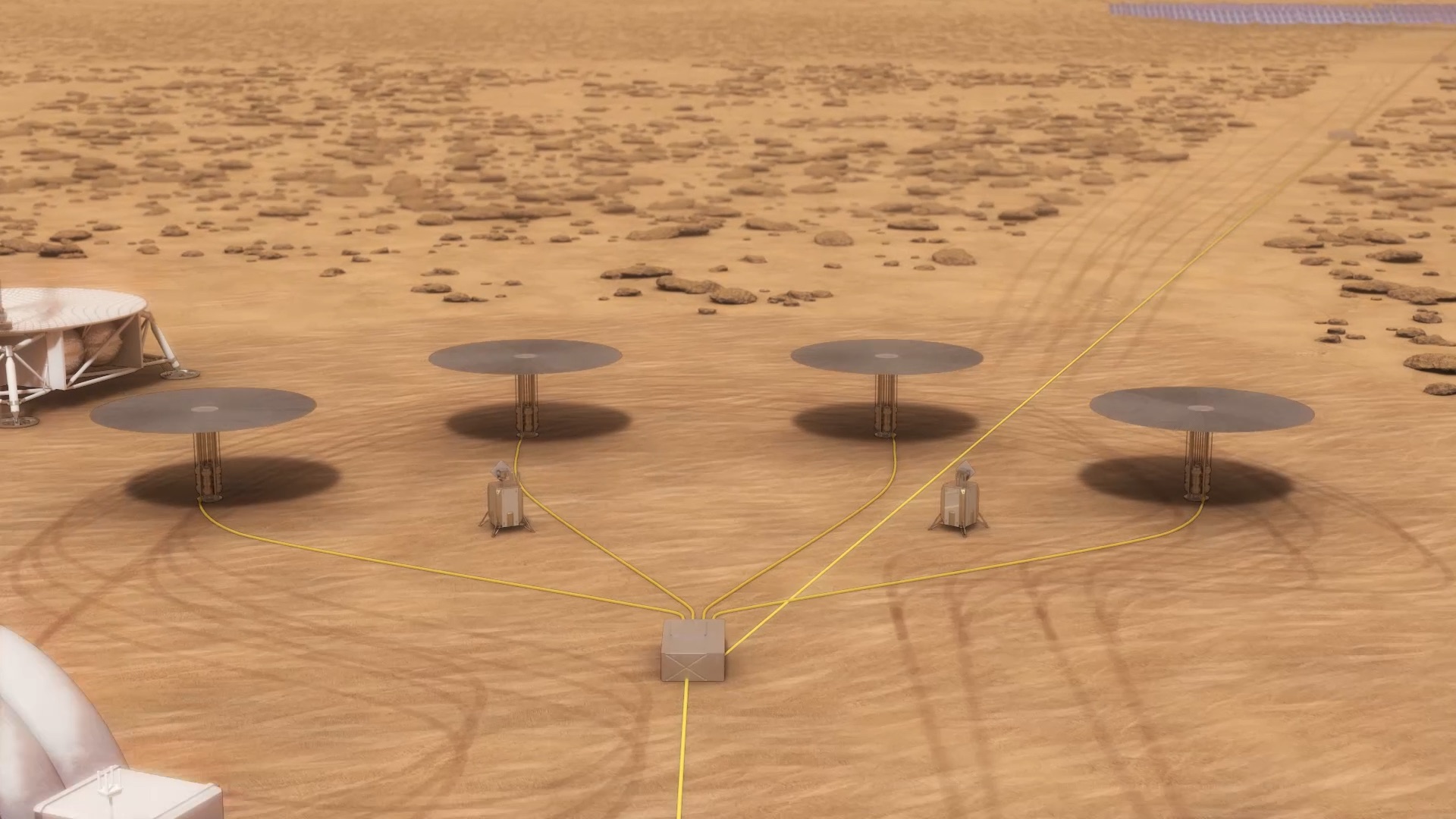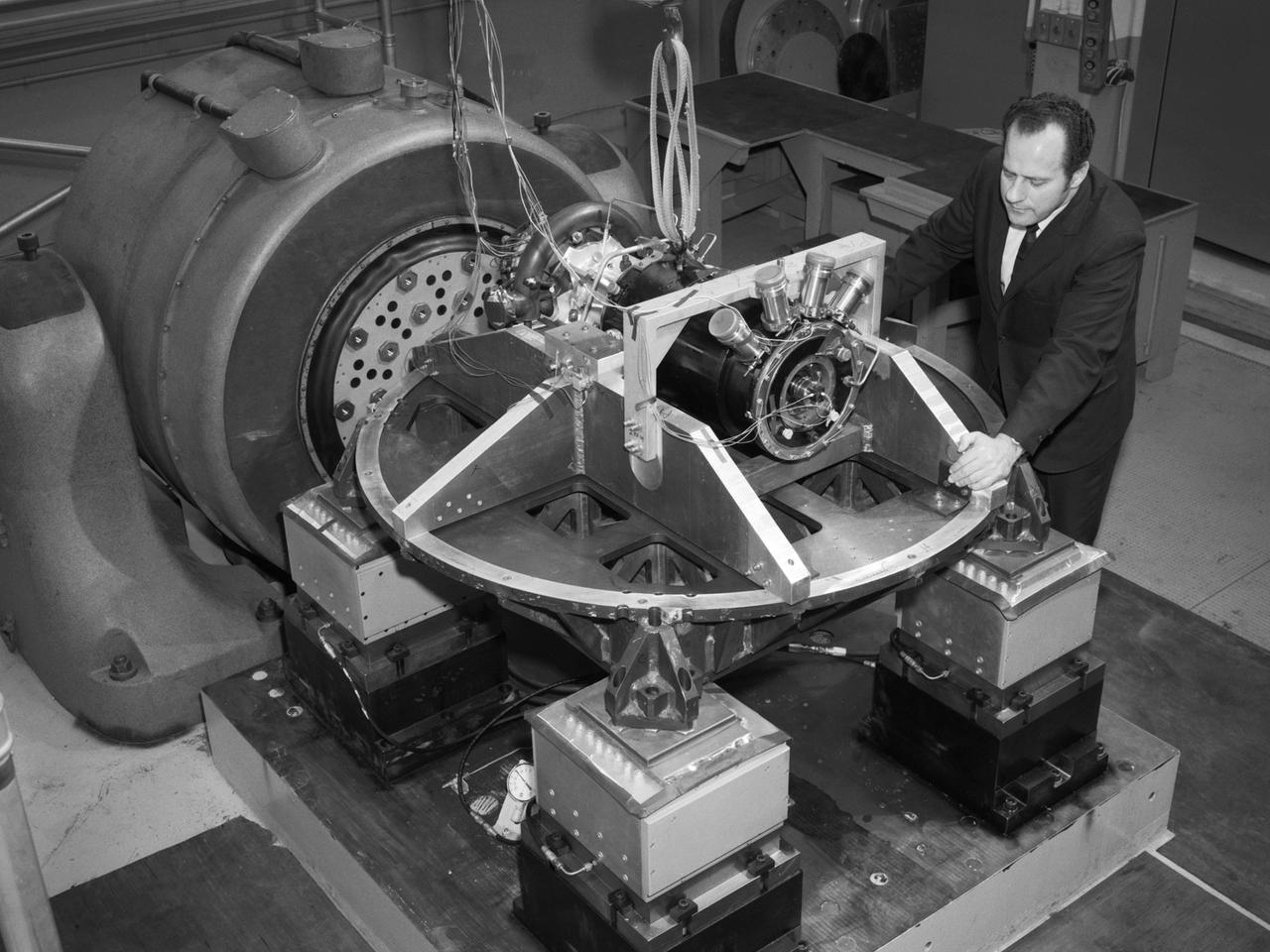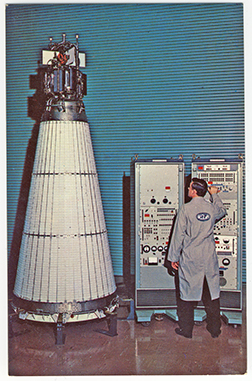NASA to Test Fission Power for Future Mars Colony

As NASA makes plans to one day send humans to Mars, one of the key technical gaps the agency is working to fill is how to provide enough power on the Red Planet’s surface for fuel production, habitats and other equipment. One option: small nuclear fission reactors, which work by splitting uranium atoms to generate heat, which is then converted into electric power.
NASA’s technology development branch has been funding a project called Kilopower for three years, with the aim of demonstrating the system at the Nevada National Security Site near Las Vegas. Testing is due to start in September and end in January 2018.
The last time NASA tested a fission reactor was during the 1960s' Systems for Nuclear Auxiliary Power, or SNAP, program, which developed two types of nuclear power systems. The first system — radioisotope thermoelectric generators, or RTGs — taps heat released from the natural decay of a radioactive element, such as plutonium. RTGs have powered dozens of space probes over the years, including the Curiosity rover currently exploring Mars. [Nuclear Generators Power NASA Deep Space Probes (Infographic)]
The second technology developed under SNAP was an atom-splitting fission reactor. SNAP-10A was the first — and so far, only — U.S. nuclear power plant to operate in space. Launched on April 3, 1965, SNAP-10A operated for 43 days, producing 500 watts of electrical power, before an unrelated equipment failure ended the demonstration. The spacecraft remains in Earth orbit.
Russia has been far more active developing and flying spacecraft powered by small fission reactors, including 30 Radar Ocean Reconnaissance Satellites, or RORSAT, which flew between 1967 and 1988, and higher-powered TOPAZ systems. TOPAZ is an acronym for Thermionic Experiment with Conversion in Active Zone.
Nuclear power revival
NASA has funded several nuclear power technology efforts in the 50 years since SNAP, but financial, political and technical issues stymied development. Three years ago, the agency’s Game Changing Development program backed Kilopower, with the goal of building and testing a small fission reactor by Sept. 30, 2017, the end of the current fiscal year. The project is costing about $15 million.
"It'll be the first time that we operate a fission reactor that could be used in space since [the] 1960s SNAP program," said Lee Mason, who oversees power and energy storage technology development at NASA’s Glenn Research Center in Cleveland.
Breaking space news, the latest updates on rocket launches, skywatching events and more!
The tests in September are designed to validate Kilopower’s design and performance. After that, NASA would be ready to proceed with developing a higher-fidelity system for testing on Mars or elsewhere, Mason said.
The test reactor, which is about 6.5 feet tall (1.9 meters), is designed to produce up to 1 kilowatt of electric power, but to keep costs down, the test unit does not include a full array of Stirling engines to convert energy generated by the fission process into heat. Thermal simulators will be used for the balance of the engines to verify the reactor’s power output, Mason said in an interview with Space.com.
NASA’s interest in fission resurfaced after a 2010 study that looked at options for RTG systems.
"At that point, we were trying to find a small fission reactor that could provide similar power output as the radioisotope power systems," Mason said.
NASA engineers figure human expeditions to Mars will require a system capable of generating about 40 kilowatts of power, which is about what is needed for "about eight houses on Earth," according to the agency. Curiosity’s RTG was designed to supply about 125 watts — less energy than what is needed to power a microwave oven — though power levels fall as the radioactive plutonium decays. [How Will a Human Mars Base Work? NASA's Vision in Images]
Solar power is another option, but that would restrict power generation to regions that are exposed to enough sunlight to charge batteries. Inside the moon’s Shackleton Crater, for example — a prime candidate for lunar sorties due to its water resources — it is completely dark. The sunniest spots on Mars receive only about one-third the amount of sunlight as Earth does.
"If you want to land anywhere, surface fission power is a key strategy for that," Michelle Rucker, an engineer at NASA’s Johnson Space Center in Houston, said during a presentation in December to NASA’s Future In-Space Operations working group.
Fission reactors also can continue working in adverse weather conditions, such as Mars’ ubiquitous dust storms.
"We’ve landed some really cool things on Mars and they’ve had some pretty remarkable power systems … but they’re not going to cut it for human missions," Mason said during last month’s Humans to Mars Summit in Washington, D.C.
The biggest power requirement for future human expeditions is running the equipment to produce fuel, air and water, plus running the habitat and recharging batteries for rovers and science equipment. NASA envisions sending four or five small fission reactors, each capable of generating about 10 kilowatts of power, to Mars, Mason said at the Humans to Mars Summit.
The units would be launched cold and activated once they reach their destinations.
"They’re not operating at launch, whereas once you fuel an RTG, it’s operating, and you have to process the thermal output," Mason said. "The reactors also have a very low radiological inventory at launch — less than 5 curies — so it’s benign … There are no fission products until the reactor is turned on, and that’s when there will be some radiation."
Partners in the Kilopower project include NASA’s Glenn Research Center, the Department of Energy, Los Alamos National Lab and the Y12 National Security Complex, which supplies the reactor’s uranium.
Irene Klotz can be reached on Twitter at @free_space. Follow us @Spacedotcom, Facebook and Google+. Original article on Space.com.

Irene Klotz is a founding member and long-time contributor to Space.com. She concurrently spent 25 years as a wire service reporter and freelance writer, specializing in space exploration, planetary science, astronomy and the search for life beyond Earth. A graduate of Northwestern University, Irene currently serves as Space Editor for Aviation Week & Space Technology.


